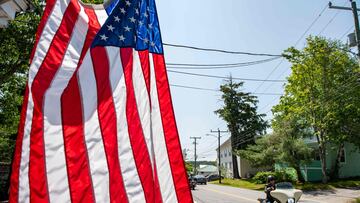Where did Flag Day originate?
The United States has commemorated its flag and its predecessors that have flown the Stars and Stripes over the past two centuries.


The Stars and Stripes has gone through a lot of changes over the nearly 250 years it has been proudly representing the US. Americans take great pride in the “enduring strength and promise” that Old Glory embodies.
That is why Flag Day is celebrated on 14 June in the United States. However, there wasn’t always a day designated nationally to commemorate all that it stands for.
While not considered a federal holiday, Flag Day is a symbolic and widely recognized holiday. It was first officially observed in 1949 when Congress and President Harry Truman approved the national holiday and signed it into law. However, the petition for the holiday to be recognized happened much before 1949.
Where did flag day originate?
In 1916, President Wilson asked 14 June be officially named Flag Day. Although Flag Day was officially proposed by President Wilson, it’s said the holiday first came about in a small town in Wisconsin decades prior. Bernard Cigrand, a teacher-turned-dentist from a small town in Wisconsin introduced the idea to celebrate Flag Day in 1885 and pushed his entire life for it to become a national holiday. Cigrand is known as the “Father of Flag Day.”
The state of Connecticut disagrees with this claim as some have also said Flag Day originated as a celebration in Hartford, Connecticut in the 1800s.
June 14, 2023
— Kevin McCarthy (@SpeakerMcCarthy) June 14, 2023
Celebration of Flag Day at the People’s House pic.twitter.com/HULSJwT1aa
Why and how did Flag Day originate?
Flag Day originated to recognize the day that the first American flag was introduced by the Continental Congress in 1777. That first US flag was designed by seamstress Betsy Ross and was chosen out of more than seventeen submissions.
Related stories

Honoring our Armed Forces
Ross’ flag was chosen for how its simple design was able to capture the spirit of the revolution. The simple design looks very similar to the one used today with one notable exception -- the number of stars. At the time of its creation, thirteen stars were used to represent each of the founding colonies that fought in the Revolutionary War.
As more states were added to the Union, so was a star for each of them. The most recent star to be added represents Hawaii, which became the 50th state in 1959.

Complete your personal details to comment